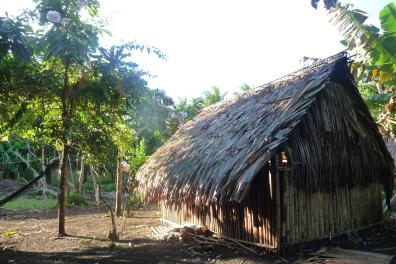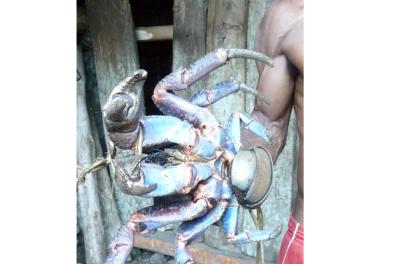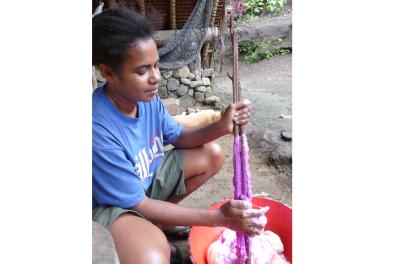Discover the language
Bislama (or Bichelamar) is one of the official languages in Vanuatu (formerly New Hebrides), a small archipelago in the South Pacific. It is a pidgin, i.e. a contact language, which speakers generally use as a second language and learn in childhood, after first acquiring one or more vernaculars. This pidgin functions as a lingua franca, as there are over a hundred vernacular languages in the country, for around 250,000 people. However, we are currently witnessing a creolization of Bislama in the cities of Vanuatu: in these areas, where speakers of very many linguistic communities are mixed together, Bislama is becoming the mother tongue of many children.
Bislama, like Pijin in the Solomon Islands and Tok Pisin in Papua New Guinea, originated from an idiom that developed on the sugarcane plantations of Queensland, during the blackbirding period. Between 1863 and 1904, tens of thousands of Melanesians were transported and used as laborers on these plantations. Not only did they find themselves in prolonged contact with European settlers, but they were also forced to communicate with each other, despite their very different languages. As a result, they adopted a sabir language, based on the syntax of their mother tongues, but with an English lexical base. After the creation of the Australian Federation in 1901 and the adoption of the White Policy, the importation of indentured Oceanian workers ceased, and many of them were sent back to their archipelagos of origin, where they popularized the use of this language. The different variants spoken in the New Hebrides, Papua New Guinea and the Solomon Islands then gradually differentiated from each other.
After Vanuatu's independence in 1980, Bislama became increasingly important. It is the only language spoken by virtually the entire population, and is the language of choice for exchanges between linguistic communities.
At Inalco, Bislama is taught in the South-East Asia and Pacific Department for 1.5 hours a week over the course of a year, which is enough to master the essentials of syntax and everyday vocabulary. A good knowledge of English, though not necessary, makes learning much easier. In addition to Inalco undergraduates, this course will also be of interest to master's and doctoral students (linguistics, anthropology, etc.) wishing to prepare for field research stays in Vanuatu.


